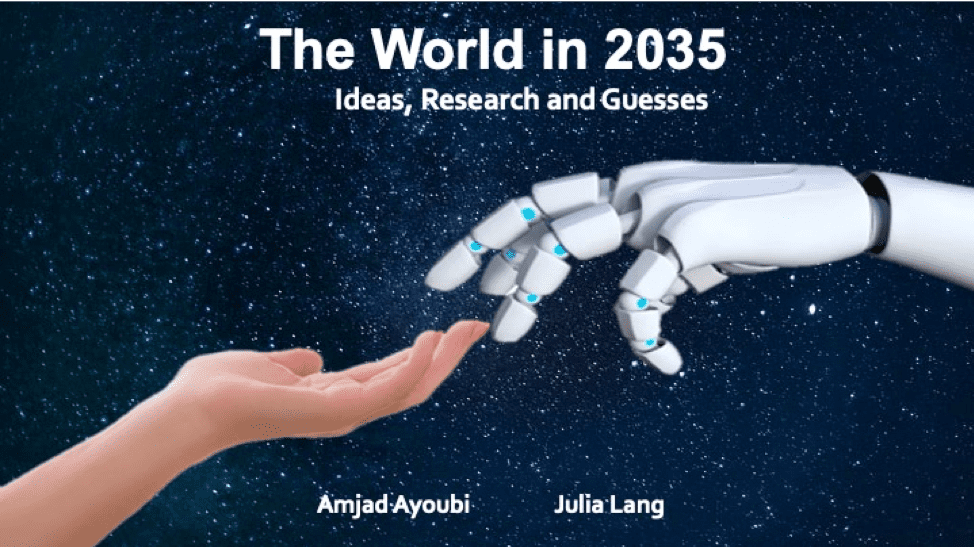
Taylor Design Thinking at the Network of Sacred Heart Schools
From video chat to flatscreen TVs, robotic help, printed food, drones and smartwatches, today’s innovations were once pure fantasies. The Taylor Life Design team is making predictions for the future of education and demonstrating how cultivating a design thinking mindset can help leaders prepare for an unknown future.
After presenting to the New Orleans Academy of Sacred Heart in June 2019, Amjad Ayoubi, Sr Associate Dean at Tulane University and Julia Lang, Taylor’s Assistant Director of Career Education and creator of the undergraduate life design course “Taylor Your Life,” were invited to the annual Conference of Sacred Heart Education in St. Charles, Missouri on October 25, 2019.
Every 15 years at this conference, the Network of Sacred Heart Schools in the USA and Canada revise the criteria that are at the heart of their five educational goals. In their joint presentation, Ayoubi and Lang shared their projections for the future of education and cultivated design thinking mindsets to support Sacred Heart board members, trustees, school leaders, and administrators creating an innovative plan for Sacred Heart to remain relevant through 2035.
Educating in an Innovating Society
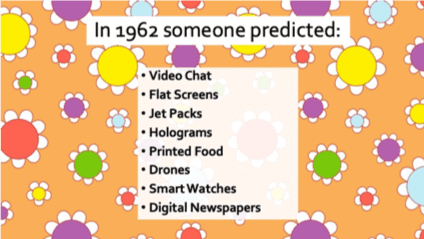
Ayoubi began the workshop with discussion of the current pace of technological innovation of today.
Presentation Highlights:
Video chat, drones, and smartwatches were once pure fantasies. The rate at which technology is developing is rapidly accelerating. An iPhone now has over 100,000 times the processing power of the computer that landed a man on the moon half a century ago. Until 1900, human knowledge was doubling every century. It is now doubling every 12 months.
We are currently experiencing the Fourth Industrial Revolution, a new chapter of human development enabled by extraordinary technology advances. With these advances already underway, Ayoubi challenged school leaders to acknowledge and accept this massive change that is underway and to become active agents preparing for the future instead of passive recipients whose schools and organizations will fail to keep up with our rapidly changing world.
Practicing a Design Thinking Mindset
Lang then took the stage, acknowledged that while it can be intimidating to attempt to plan, design thinking is a powerful tool that can be applied to tackle a wide variety of challenges and design for a future that does not yet exist. She posed that by practicing design thinking mindsets, leaders can develop self-confidence in meeting the needs of the future.
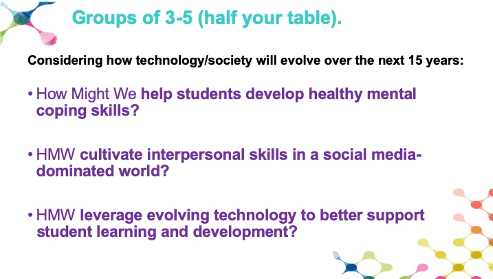
Lang worked with school leaders ahead of time to develop How Might We questions that were specific to challenges participants were currently experiencing in their schools.
After introducing Design Thinking, Lang honed in on the “ideate” mindset and split participants into groups of four. Each group choose a particular stakeholder group (alumni, students, faculty, administrators, parents, prospective students, their home city, or all sacred heart community) and Lang led them through an ideation activity, introducing different constraints along the way to assist with brainstorming even more ideas.
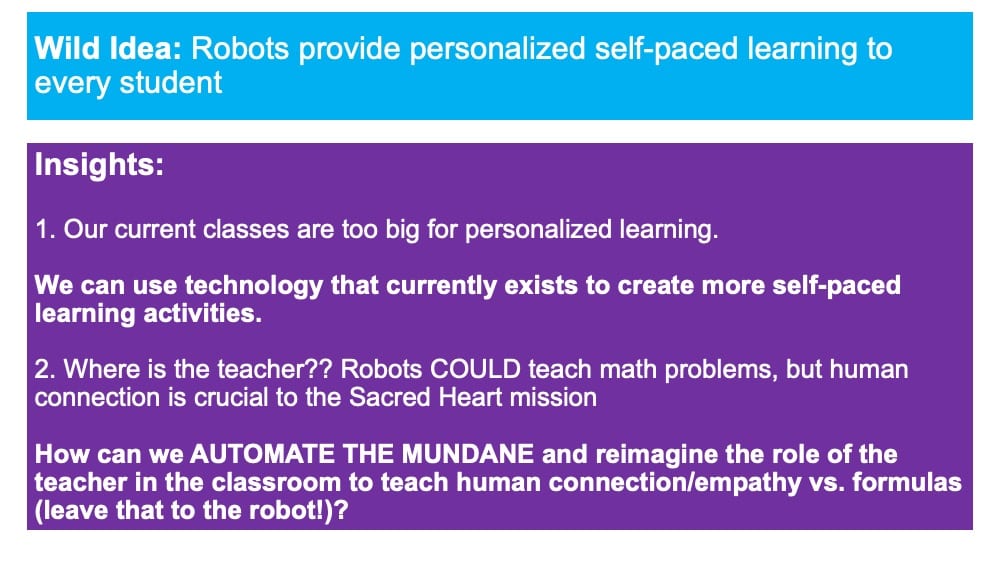
Each group generated over 50 ideas to address their particular challenge. Participants then sorted and grouped ideas by theme, voted on their favorites, and extracted insights to move forward. When brainstorming, she stressed how it is crucial to extract insights that you can use moving forward. A wall full of post-it notes is not enough!
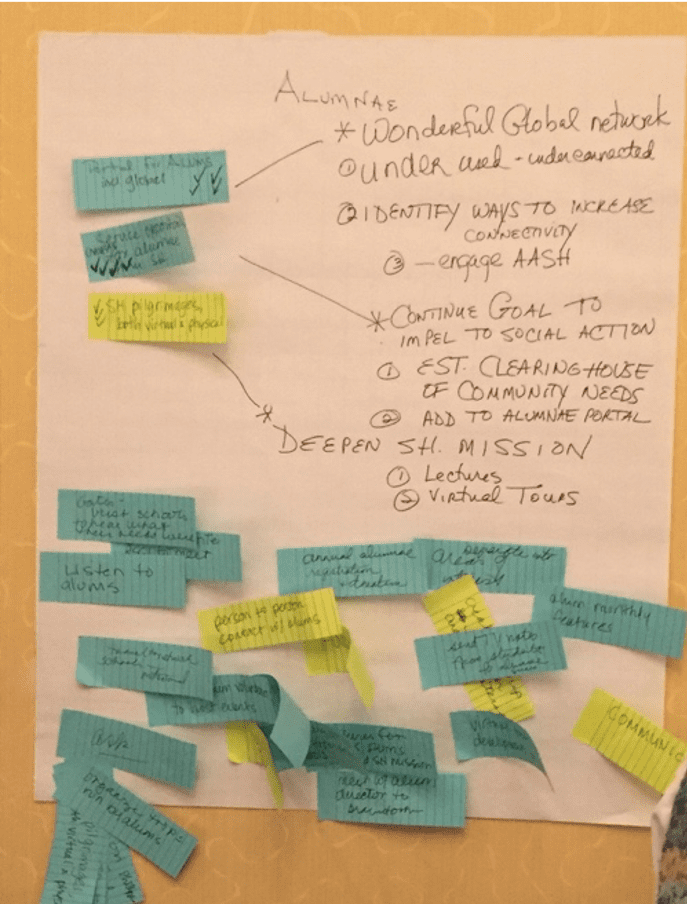
Lang ended the interactive workshop by asking school leaders to imagine the power of introducing design thinking mindsets early into students’ educational experience, such as approaching problems with a questioning mindset, viewing failure as a way of iterating forward, and trying out a few prototypes before committing to one solution to test their ways forward.
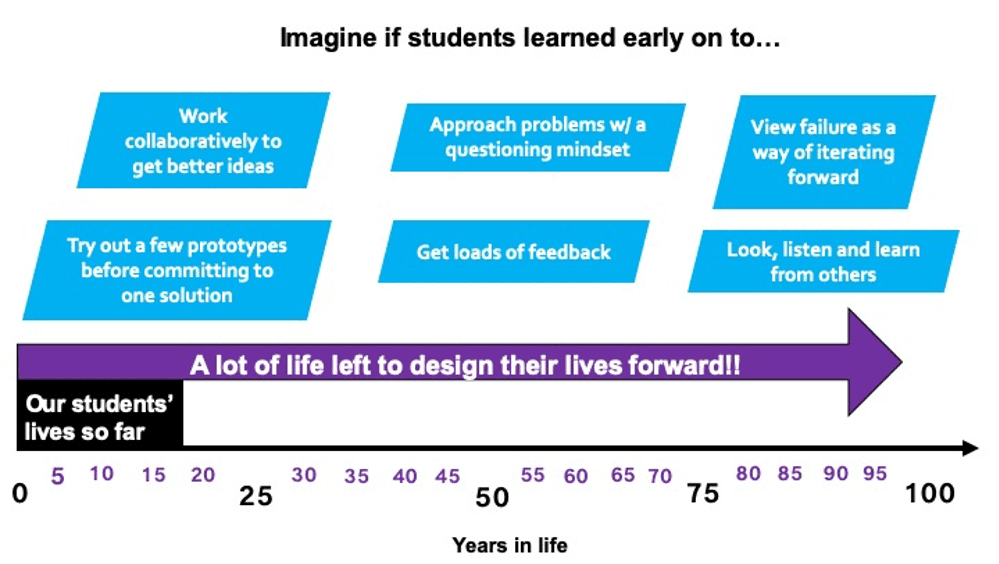
Prototyping for the Future
At this point, the room was sizzling with self-generated ideas groups had generated to tackle challenges of the future. Ayoubi then presented actual predictions about the future of education, many of which participants had already come up with on their own, such as:
- Every student gaining access to an individual AI tutor that will collect data daily on the student and create self-paced learning activities while regularly re-assigning students into small groups based on each student’s learning style and pace of progression
- A complete reimagining of the classroom itself: seating arrangements will emphasize four to six students around a large touchscreen- or hologram-enabled desk, instead of traditional long rows of individual desks facing a single teacher
- AI tutors will be assigned more one-on-one time to student groups falling behind the class’ edu cation/testing average
- The teachers (yes, plural) will offer special projects to those student groups ahead of the curve.
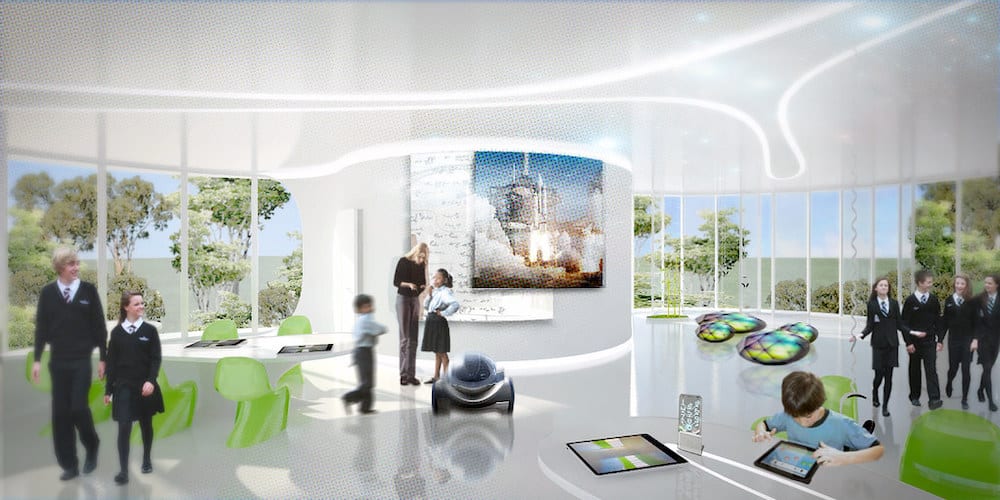
6 Necessary Design Thinking Mindsets
After sharing an array of future predictions, the talk concluded with six mindsets necessary to prepare for an uncertain and unpredictable future:
- Cultivate a design thinking mindset: Create a work culture for teachers, administrators and students to listen, experiment, innovate, fail and iterate their way forward.
- Establish teams who focus on innovation, research, best practices and dissemination of knowledge and experiences.
- Establish a reward system that celebrates innovations amongst your team
- Adopt a beginner’s mindset: remain in a constant state of learning and stay curious
- Start using a customer relationship management (CRM) platform Stay connected to your students. Data is power. Accelerate your planning cycle more often than every 15 years. Knowledge, innovation and change are accelerating at an exponential rate and you need to be more agile in your planning.
- Accelerate your planning cycle more often than every 15 years. Knowledge, innovation and change are accelerating at an exponential rate and you need to be more agile in your planning.
Do you have thoughts about the future of education or design thinking? Contact us to get involved in the conversation!